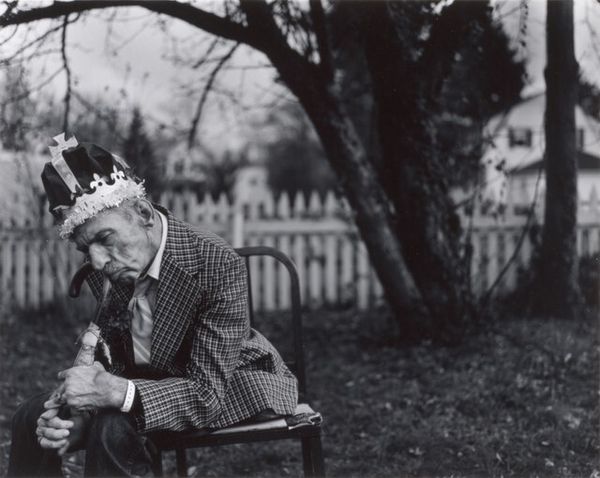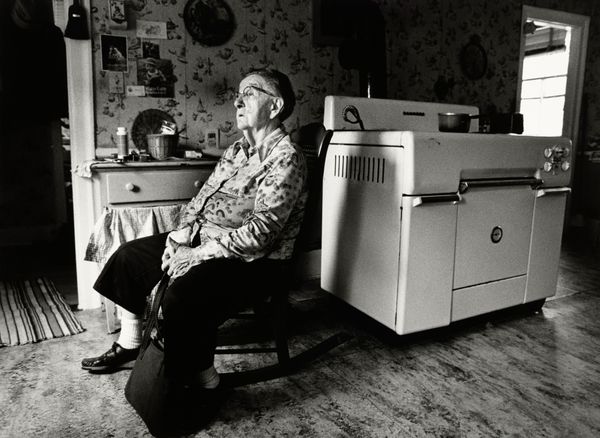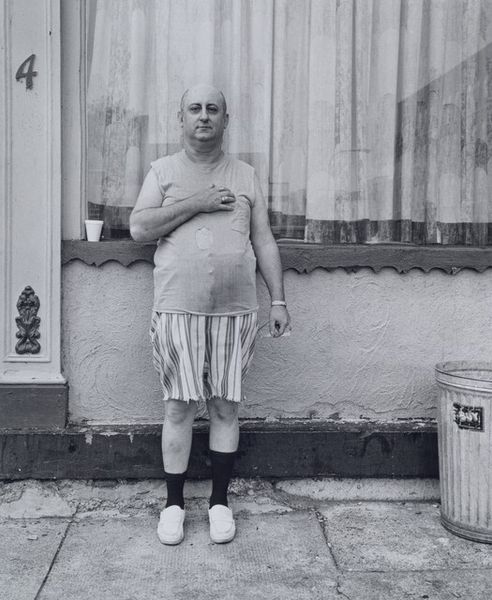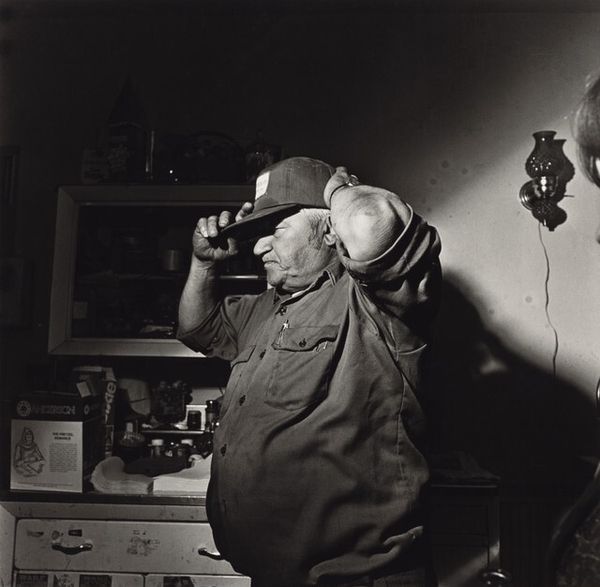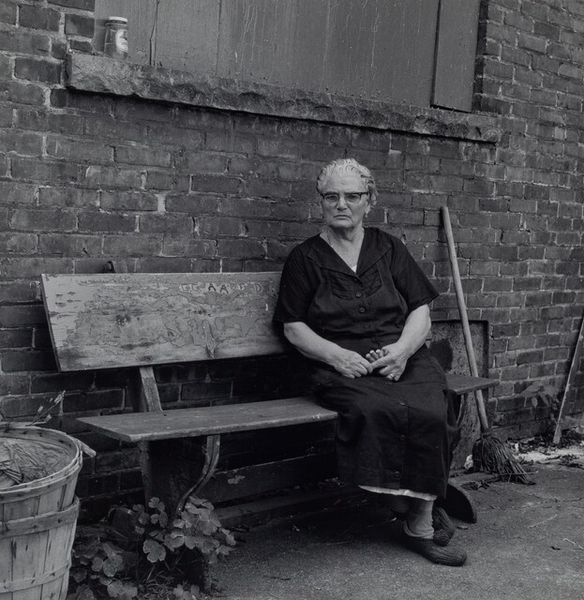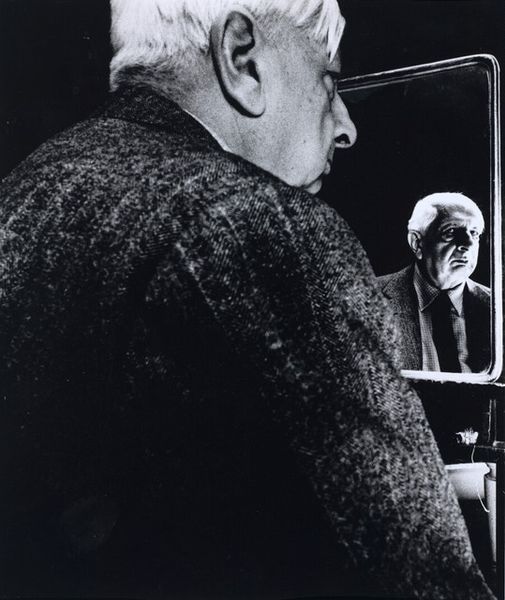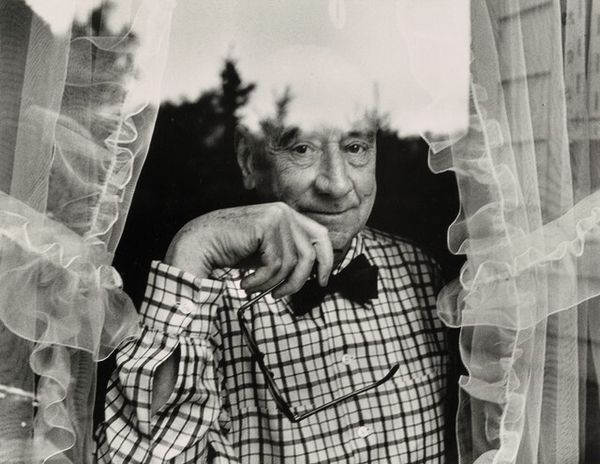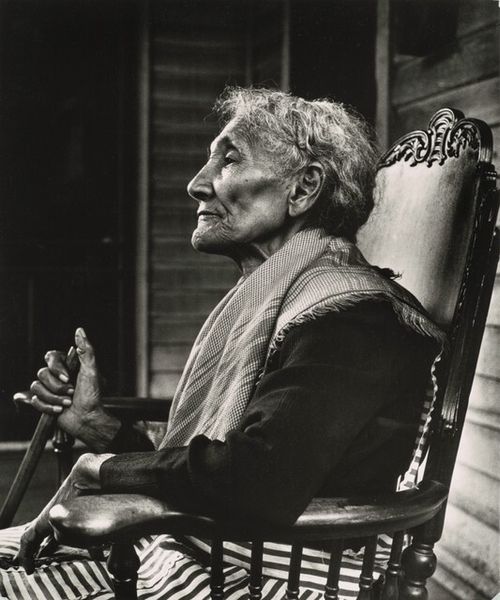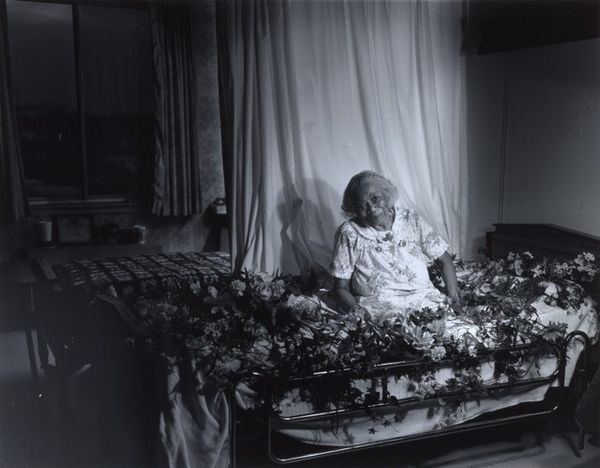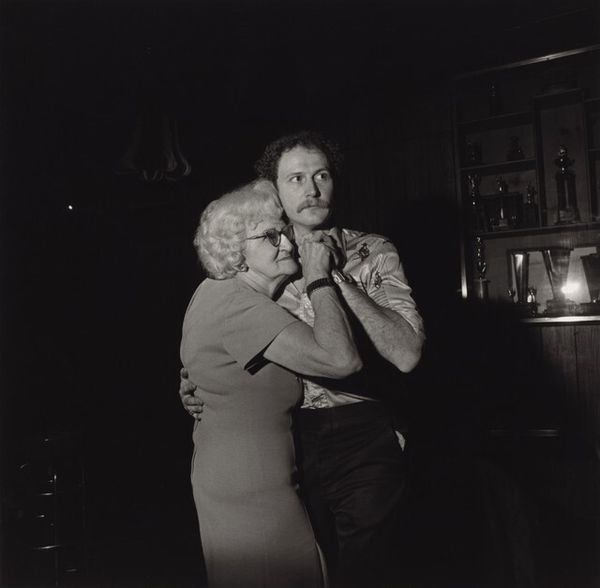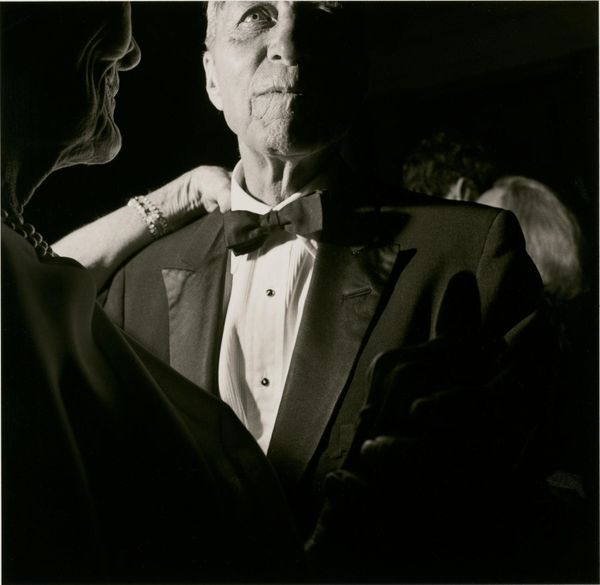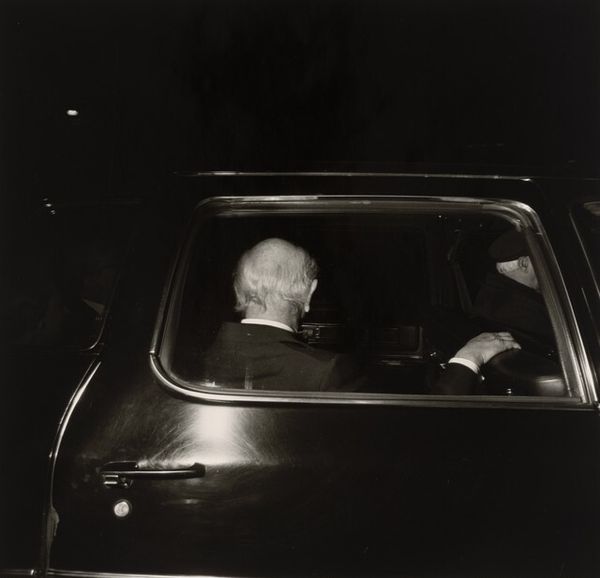
Boston (As the temperature drops, Linda and Gerald reluctantly spend the night at a shelter, rather than on the streets. This emergency facility, which will admit people who are drunk, is sometimes referred to on the street as the "Nightmare Center" or "Fright Center." There are no beds, so guests must sleep on chairs or on the floor. Linda sleeps under her wheelchair because she worries that someone might steal it.) 1999
0:00
0:00
photography, gelatin-silver-print
#
portrait
#
contemporary
#
black and white photography
#
social-realism
#
street-photography
#
photography
#
black and white
#
gelatin-silver-print
#
monochrome
#
monochrome
Dimensions: image: 22 × 32.7 cm (8 11/16 × 12 7/8 in.) sheet: 27.9 × 35.4 cm (11 × 13 15/16 in.)
Copyright: National Gallery of Art: CC0 1.0
Editor: This is "Boston," a 1999 gelatin-silver print photograph by Betsy Karel. It strikes me as incredibly bleak, portraying a man in what looks like a temporary shelter. What are your thoughts? What stands out to you in this image? Curator: I’m immediately drawn to the interplay between the individual and the systemic failures that produce such a stark scene. Karel’s choice of black and white, the grainy texture—these choices aestheticize a reality many would rather ignore. The man's palm tree T-shirt clashes with the setting. What might that juxtaposition tell us about aspirations versus lived experience, about societal promises versus reality? Editor: I didn't even notice the palm tree! So, it's a visual commentary on the American dream, perhaps? Curator: Exactly! Consider how social-realism brings this to light: The "Nightmare Center" the artwork's extended title mentions—a place where dignity is secondary to survival. We must think about what commentary Karel is providing regarding our societal failings. Also, notice Linda, a disabled woman, literally under her wheelchair to avoid being robbed; what does it signal about who and what society protects? Editor: I’m now thinking about who is absent from the frame, who is safe and comfortable, versus those forced to inhabit these spaces. I appreciate you pushing me to consider this work in light of social justice. Curator: The work invites us to reflect on power and visibility, on who is seen and who is conveniently ignored. I wonder, after our discussion, what conversations do you hope this work sparks with others? Editor: I think it makes me want to find out more about the individuals behind statistics about housing insecurity. It's definitely a call to action.
Comments
No comments
Be the first to comment and join the conversation on the ultimate creative platform.

